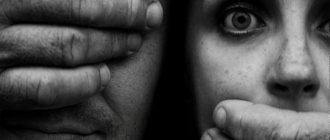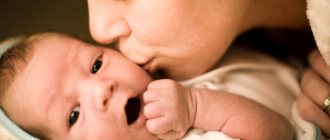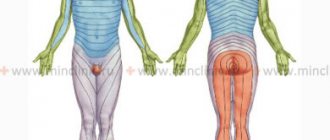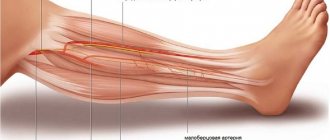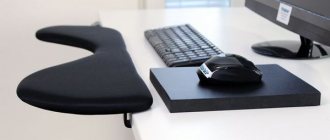Diagnosis is an important step on the path to recovery
Symptoms unique to meningitis deserve special attention. All these reflex syndromes bear the names of the “forefathers” of modern neurology who discovered and described them for the first time many years ago: Kernig, Mondonesi, Flatau, Lesage and others.
The hanging symptom is a specific diagnosis of meningitis only in infants (up to 2 years). In children of this age it is very difficult to determine the presence of meningitis, and the Lesage test became a real discovery in child neurology of that time.
This method was first described by Lesage Adolphe August (AA Lesage, 1862–1952), a famous French pediatrician. He is known for his work and research in the field of pathology and hygiene of children, as well as meningitis and gastrointestinal diseases.
How is the check carried out?
Lesage's sign, or hanging sign, helps determine whether an infant has meningitis. This research is carried out like this:
- the doctor takes the infant by the axillary fossa (armpits) - with both hands;
- The back of the head must be held with the index fingers;
- In this fixed position, the examined baby is raised.
If the baby involuntarily pulls the lower limbs towards the tummy, bending them at the hip and knee joints, and holds them in this state for a long time, then this is positive Lesage syndrome. That is, this indicates the presence of meningitis in the child. In a healthy baby, the legs move freely, bend and unbend.
Also for infants, the symptoms of Tripod, Fanconi, Meitus are checked, but they are more complex and less informative.
Meningeal syndrome
Meningeal syndrome is formed by signs of irritation of the meninges due to their inflammation or subarachnoid hemorrhage. The term meningism (Dupre E., 1895) refers to symptoms of irritation of the meninges that occur during intoxication, metabolic disorders, some general infections, cerebral edema and hydrocephalus, but there are no signs of inflammation of the meninges and the presence of blood in the cerebrospinal fluid. With meningism, unlike meningitis, inflammatory changes in the cerebrospinal fluid are not detected.
The main, most constant and informative signs of irritation of the meninges are stiffness of the neck muscles and Kernig's sign. A number of other symptoms also have diagnostic significance.
1) Rigidity (lat. rigidus - hard, hard) of the occipital muscles is a consequence of a reflex increase in muscle tone of the head extensor muscles. When passively flexing the head of a patient lying on his back, this cannot be done due to involuntary muscle resistance. In this case, the patient's upper body may involuntarily rise. Thanks to muscle protection, headaches, inevitable with meningitis, do not get worse when moving the head.
Rigidity of the neck muscles can also occur with severe parkinsonism syndrome, along with other manifestations of the latter (akinesia, bradykinesia, oligokinesia, hypokinesia, lack of conjugal movements, increased muscle tone of the extrapyramidal type - mainly in the flexor muscles and with the “cogwheel” phenomenon during passive flexion of limbs, microbasia, micrographia, tremor, “petitioner” pose, shuffling “doll” gait - feet are placed parallel when walking).
It should also be noted that limited mobility in the cervical spine in elderly patients may be a consequence of osteochondrosis, paratonia (impaired muscle tone in the back of the head, not associated with parkinsonism). In contrast to these conditions, with meningitis, only flexion of the head is difficult, but not its rotation or extension.
2) Kernig’s sign (1882) – a reflexive defensive reaction in response to extension of the leg at the knee joint in a patient lying on his back. With meningitis, the symptom is positive on both sides (if the patient does not have hemiparesis). The symptom can also be positive in elderly patients if they have muscle rigidity (this symptom was allegedly first described in 1810 by medical student H. Strong).
3) The “pointing dog” or “cocked gun” pose - the patient lies on his side with his head thrown back and legs pulled up to his stomach, arching his body forward (meaning opisthotonus - tonic contraction of the spinal extensor muscles; Greek opisthen - behind, back; tonos – tension). The arms are bent at the elbow joints. There may be trismus (Greek trismos - clenching of the jaws) - tonic tension of the masticatory muscles.
4) Headaches of a diffuse nature, aggravated by exposure to external sensory stimuli.
5) Vomiting – more often than not, vomiting is preceded by nausea, but this does not always happen. Vomiting is not associated with the intake of food, liquid or medication, it is profuse and often repeated, and does not bring relief. It occurs due to direct irritation of the nuclei and fibers of the vagus nerve.
6) Sensory hyperesthesia - hypersensitivity to light, sounds, touching the skin and mucous membranes, and other external and internal sensory stimuli, which usually increase the intensity of the headache due to the irradiation of excitation to the nuclei of the cranial nerves, the receptors of which are scattered in the meninges and blood vessels of the brain. When tapping, for example, with a hammer on the zygomatic bone, a grimace of pain appears on the patient’s face - Bekhterev’s symptom, and percussion of the frontal bone causes increased headache and shuddering - Lichtenstern’s symptom. Children become capricious and resist examination - it increases their suffering.
7) Symptom of Lesage hanging - if a child of the first years of life is taken under the arms and raised above the bed, he pulls his legs to his stomach and fixes them in this position (a healthy child minces his legs, he seems to be looking for support).
 Meningeal potty symptom - when a child with meningitis sits on the potty, he tends to rest his hands on the floor behind his back.
Meningeal potty symptom - when a child with meningitis sits on the potty, he tends to rest his hands on the floor behind his back.
9) Symptom of kissing the knee - with irritation of the meninges, a patient with meningitis cannot, due to increased headaches, touch his knee with his lips.
10) Brudzinski’s meningeal symptoms - there are four of them: a) cervical symptom - when pressing on the cheek under the zygomatic arch on the same side, the shoulder girdle is raised and the arm bends at the elbow joint; b) upper symptom - when trying to bend the head of a patient lying on his back, his legs involuntarily bend at the hip and knee joints, pulling towards the stomach; c) middle or pubic symptom - when pressing on the pubis of a patient lying on his back, his legs bend at the hip and knee joints and are pulled towards the stomach; d) lower symptom - when trying to straighten the leg of a patient lying on his back, bent at the knee joint, he reflexively pulls the other leg towards his stomach.
11) The symptom of a scaphoid abdomen is tension in the abdominal muscles, resulting in a retracted abdomen. It is often detected in children suffering, in particular, from tuberculous meningitis.
12) There are often signs of damage to the cranial nerves, in particular strabismus, double vision, decreased visual acuity, tinnitus, etc.
13) Inflammatory changes in the cerebrospinal fluid - pleocytosis, or an increase in the number of leukocytes in purulent meningitis, lymphocytes - in serous meningitis and at the same time, but to a lesser extent, an increase in the amount of protein in the cerebrospinal fluid (cell-protein dissociation; in tumors the ratio is often the opposite - protein-cell dissociation ). In case of immunodeficiency, the only sign may be a change in the content of only protein and glucose in the cerebrospinal fluid. Neutrophilic pleocytosis and a significant increase in protein levels are considered a poor prognostic sign of meningitis.
14. Autonomic symptoms - increased body temperature, slow pulse, hyperhidrosis, hypersalivation, breathing problems, etc. Children with meningitis often experience drowsiness, progressive weight loss and cardiac arrhythmias - Lesage-Abram's symptom.
Return to Contents
Other meningeal signs
The following important symptoms of meningitis are common to adults and children:
- Kernig's syndrome . It consists in the fact that the subject cannot straighten the leg at the knee if it is already bent at the hip joint.
- Flatau reflex . With a sharp passive (by the doctor’s hand) flexion of the patient’s neck, the pupils dilate.
- Hermann's sign . While the doctor presses the patient's head to the chest, the patient's big toes extend.
- Mondonesi syndrome . When pressing on the eyeballs through closed eyelids, the examined patient feels pain, and this is a sign of meningitis.
- Matseven's symptom - a specific “sound of a cracked pot” is heard when examining the skull with a finger or a percussion hammer.
All these symptoms and specific reflexes are included in the meningeal symptom complex.
MENINGITIS: AN INFECTION WITH MANY FACES
“I have seen cases where a person felt well at breakfast, and by lunchtime he was already dead!” — Clayton Golledge, an American microbiologist and infectious disease specialist, wrote about meningitis. Alas, despite all the achievements of modern medicine, this infection still remains one of the most dangerous and has a fairly high mortality rate.
We asked a pediatrician, deputy chief physician of Children's City Clinical Hospital No. 9 named after G.N. about how to recognize it and how to protect against it. Speransky on the infection of Alexander Tebenkov.
“Meningitis is called inflammation of the membranes of the soft meninges,” the expert explains. — The causes of this disease can be very different, sometimes it leads to fulminant sepsis and the most tragic outcome. This is why doctors are so insistent about the need for vaccination. Moreover, parents should understand that there is no single vaccination, because the causative agents of meningitis can include both viruses and bacteria.
Meningitis can be an independent disease or a manifestation of a generalized bacterial or viral infection. The most common bacterial pathogens are meningococcus, pneumococcus and hemophilus influenzae.
Meningitis usually occurs in winter and spring and coincides with an outbreak of respiratory infections. As experts say, meningitis comes on the “tail” of ARVI. And every 10-15 years there is a significant increase in the incidence of meningococcal meningitis. Now we stand just on the threshold of another rise.
In most cases, meningitis is transmitted by airborne droplets, that is, it is transmitted by coughing and sneezing, as well as by contact with an infected person.
The most contagious pathogen, which causes periodic outbreaks, is meningococcus. Once on the mucous membranes of the nasopharynx, it penetrates through the bloodstream through the blood-brain barrier, ends up in the soft meninges and causes inflammation in them. This microorganism has many serogroups. The most common are A, B, C, and in the last few years they have been joined by meningococcus W135. The latter often becomes the cause of very severe meningitis. Strains E29, Y, Z, K are found much less frequently. The list is far from exhaustive.
Meningococcal infection accounts for more than 50% of bacterial meningitis. Further, in the process of decreasing, its causative agents turn out to be Haemophilus influenzae and pneumococcus. According to statistics, those at risk for meningococcus are young children, especially boys in the first 5 years of life, and young people 18-24 years old. Haemophilus influenzae most often causes meningitis in children aged 6 months to 4 years, pneumococcus usually causes it in children under 2 and over 10 years.
Acute onset
Parents should immediately be alert to symptoms such as a sharp rise in temperature to 39-40 degrees, a significant deterioration in well-being and headaches accompanied by nausea and vomiting that are not associated with food intake. Another telltale symptom is photophobia.
It is important to call an ambulance as quickly as possible or take the child to the hospital yourself. Meningococcal meningitis can be accompanied by meningococcal sepsis and take fulminant forms. With Haemophilus influenzae infection, symptoms may develop within 1-3 days. It happens that a pink or red rash also appears (most often with meningococcal infection), which disappears with pressure. After a few hours, it turns into bruises with a dark center of varying sizes. This is a very dangerous symptom: necrosis of soft tissues caused by sepsis has begun. An ambulance must be called immediately and rush to the hospital. Delay is like death!
The rash may appear without clear symptoms of meningitis. But when combined with high temperature, this is a serious reason for alarm and calling an ambulance.
Any of the pathogens can bring a patient to intensive care within a matter of hours.
Diagnosis of meningitis
In addition to the symptoms that are immediately visible, in the hospital emergency room the doctor will also check the so-called meningeal symptoms to make a diagnosis.
This:
rigidity of the neck muscles: their increased tone makes it impossible to tilt the head forward, often because of this the child generally lies with his head thrown back;
Kernig's sign
: the leg of the patient lying on his back is bent at an angle of 90° at the knee and then an attempt is made to straighten it. With meningitis, this cannot be done due to a reflex increase in the tone of the leg flexor muscles;
Brudzinski's symptoms
: if you lay the patient on his back and tilt his head to his chest, the legs at the hip and knee joints will involuntarily bend. They will also involuntarily bend if you press on the area of the symphysis pubis;
Lesage's symptoms
: When the baby is held under the armpits, he throws his head back and pulls his legs towards his stomach.
In infants, the large fontanelle is checked
: It bulges, pulsates and is tense.
If meningitis is suspected, a mandatory examination of the cerebrospinal fluid helps to remove or confirm the diagnosis. To do this, a lumbar puncture is performed: a needle is inserted into the spine at the level of the lumbar region. The cerebrospinal fluid obtained with its help is examined for cytosis (content of cellular elements). Based on the results, one can judge the nature of the inflammation - whether it is viral or bacterial. In case of bacterial infection, the content of neutrophils and protein in the cerebrospinal fluid is increased. In parallel, in order to accurately determine the pathogen, a bacterial culture of the cerebrospinal fluid is performed.
In addition, to find out the area and volume of brain damage, as well as to predict the course of the disease, CT or MRI is performed.
The latex agglutination method helps to identify the pathogen literally within a few minutes, without waiting for the results of a bacterial test (its results take several days). The PCR method is also used for express analysis. This does not cancel bacteriological research. As a rule, it confirms the results of express methods.
Long treatment
If treatment is started literally in the first hours of the onset of the disease, the prognosis in most cases is favorable. Therefore, antibacterial therapy begins even before obtaining accurate results of bacteriological examination. The doctor relies on the results of express methods and his own intuition and experience.
“When prescribing antibiotics, their ability to penetrate the blood-brain barrier and act on the widest possible range of possible pathogens is taken into account,” says pediatrician Alexander Tebenkov
. — Currently, drugs such as third-generation cephalosporins and carbapenems are used.
Meningococcus is sensitive to penicillin antibiotics. But pneumococcus and Haemophilus influenzae can be resistant to antibiotics.
Be prepared for the fact that recovery from meningitis will be long. Recovery on the 13-15th day from the onset of the disease and, accordingly, discharge from the hospital are considered a good result. The child is discharged home under outpatient supervision of a neurologist. The first examination should take place a month after discharge, then 2 more examinations are carried out at an interval of 3 months. A specialist is then placed as needed. Outpatient observation, if everything goes according to plan, lasts up to 2 years.
Salvation lies in vaccination. Meningitis usually does not go away without consequences.
“According to statistics, residual neurological disorders in the psycho-emotional sphere are observed in 35-40% of cases,” says our expert. — In 5-12% of cases, meningitis causes sensorineural hearing loss, which is diagnosed after recovery. Motor and visual impairments are also noted. All this adversely affects the overall development of the child. After severe forms of meningitis and late treatment, there are cases of severe mental disorders.
If the disease is severe, there is also a possibility of hypertension syndrome, convulsive syndrome (epilepsy), paresis and even paralysis. In adults, such disorders lead to severe disability—up to 25% of all complications are ischemic stroke. Children have higher compensatory capabilities.
How to protect a child from this terrible disease with a large percentage of tragic outcomes?
Firstly, follow basic hygiene rules and teach your baby this, and secondly, get vaccinated. Vaccination may not provide 100% protection, but it will eliminate the threat of infection by the most common pathogens of this disease and prevent the development of generalized, severe forms of the disease. However, cross immunity cannot be ruled out. Vaccination with a combined vaccine, for example, against meningococcus, will significantly alleviate the course of the disease when infected with rare pathogens for which there is no vaccine.
“Now there are vaccines to prevent meningococcal, pneumococcal and hemophilic infections,” continues Alexander Tebenkov
. — We mean their generalized forms, which cause not only meningitis, but also other serious diseases. Vaccinations against pneumococcus Pneumo-23 and Prevenar-13 are included in the national vaccination calendar. Moscow has also included vaccination against pneumococcus in its regional calendar. For example, Menactra protects against 4 types of pneumococcus - A, C, W135 and E29.
On average, serious consequences after meningitis are observed in 10-30% of patients. Most of them are preschool children and people over 60 years old.
https://phmlife.ru/medkabinet/detskie-bolezni/123-mnogolikaya-infektsiya.html#expert


